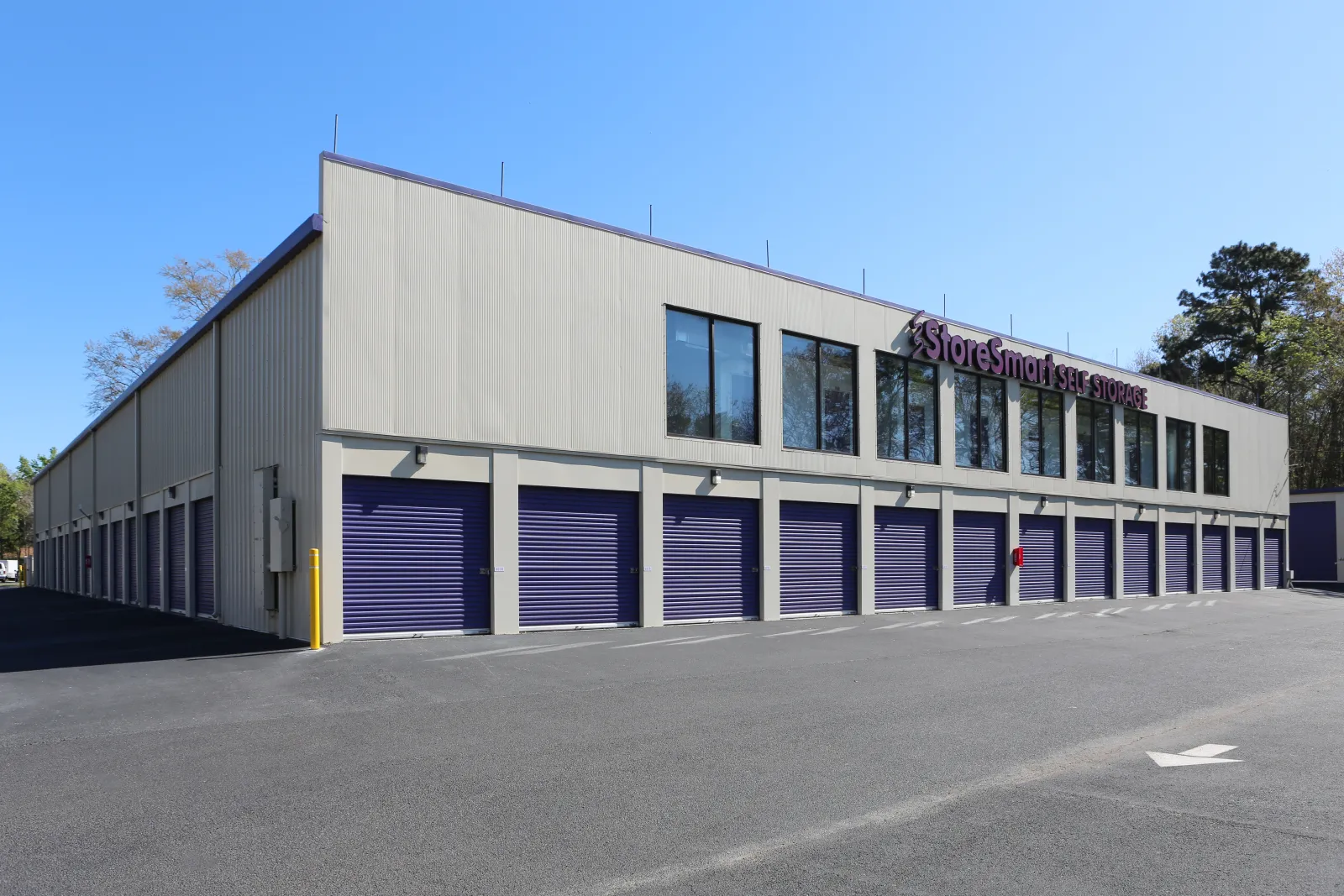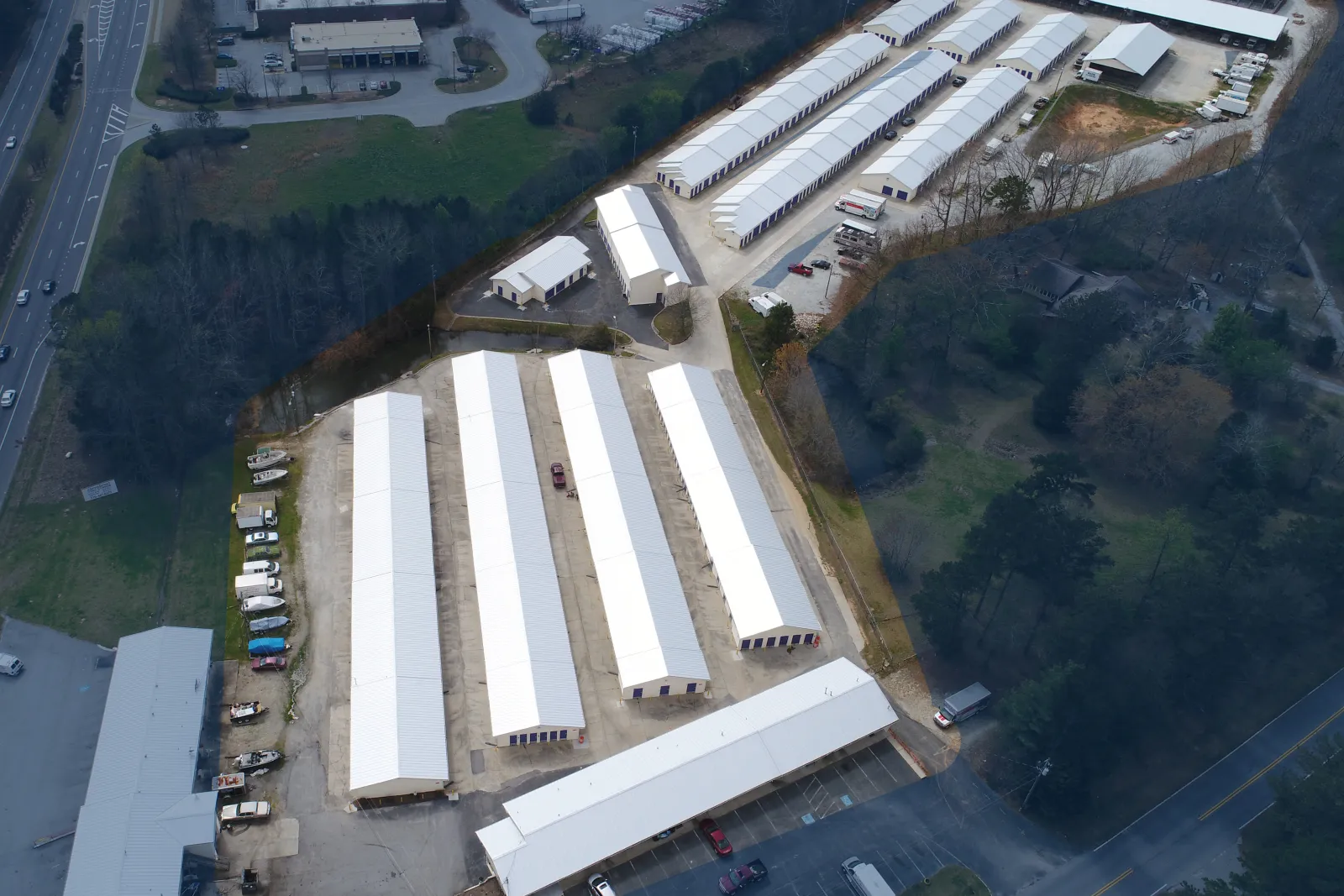
To paraphrase a popular saying, there's more than one way to invest in real estate. Because every real estate investment is unique, it's important to understand not only the potential risk and rewards, but also the various structures for investing.
By understanding the capital stack in real estate investments, investors can make more informed decisions and choose the best options for reducing risk while maximizing potential reward.
Related: How To Invest in Real Estate
Subscribe to our weekly email list to learn more about the ins and outs of self-storage real estate investing.
What is a Capital Stack?
The capital stack in real estate describes the different layers of funding that are used to finance the acquisition, development, and improvement of a real estate project.
A capital stack in a real estate investment refers to three concepts and rights:
- Tiers of financing sources in a real estate investment, such as equity and debt
- Order in which investors are paid back through income and profit distributions over the entire holding period
- Repayment rights in the event of a default
Buying a home is a good way to think about a
simplified version of the capital stack.
When purchasing a primary residence there are normally only two capital stacks: The buyer's down payment is the equity part of the capital stack, and the mortgage is the debt part of the capital stack.
The lender receives periodic interest and principal payments each month over the loan term, and the buyer has the right to occupy the home (which can be viewed as a form of periodic repayment in exchange for the down payment). If the home is sold (or goes into foreclosure) the lender is paid off first or 'made whole,' with any remaining profit remitted to the homeowner.
Sometimes homeowners take out a home equity loan to update the property or pay for a child's college tuition. Loans like these are often referred to as second position mortgages, and in exchange for a higher level of risk the lender receives a higher interest rate. When the house is sold, the primary mortgage is paid off first, followed by the second position mortgage, and lastly the homeowner.
Commercial real estate capital stacks may be a bit more complicated, and can be designed by the private equity sponsor to meet the goals of each individual investor.
For example, one investor may prefer to receive regular interest payments, another may want a higher interest payment in exchange for subordinated or second position debt, while other investors may want a share of the monthly cash flow and potential profits when the project is eventually sold.
Although a capital stack in commercial real estate can be structured in a variety of different ways, there are generally four layers to the capital stack in a real estate investment.
Each layer of the capital stack has different levels of risk and potential reward. As a rule of thumb, the higher an investor is on the capital stack, the greater the risk is in exchange for a higher reward:
Explore our current investment opportunities to get started with a new investment vehicle—self storage.
Common Equity
Common equity sits on top of the capital stack and offers the highest potential reward in exchange for the highest level of risk. People who invest in the common equity of a project own a piece of the property and receive a share of the recurring cash flow and percentage of profits when the property is sold. However, funds are distributed to common equity investors only after the debt has been serviced and the investors at the lower levels of the capital stack have been paid.
Preferred Equity
Similar to the way that a first position mortgage has priority over a second position mortgage, preferred equity holders have priority over holders of common equity. Investors with preferred equity have the first right to receive a pro rata share of the monthly cash flow, along with a percentage of the profits when the property is sold, before the common equity holders are paid. Although preferred equity has priority to common equity, the rights of a preferred equity investor are lower than those of the debt holders.
Mezzanine Debt
Mezzanine debt is similar to a second position lender, and is usually unsecured by the real property. The rights of mezzanine debt holders are subordinate to senior debt holders, but hold priority over preferred equity and common equity investors. Because holders of mezzanine debt are not paid until payment has been made to senior debt holders, the interest rate paid to mezzanine debt holders is usually higher than senior debt. Sometimes mezzanine debt holders will also receive a small percentage of the profits when the property is sold, or an interest rate 'kicker' if the project performs better than expected.
Senior Debt
Senior debt sits at the bottom of the capital stack and serves as the foundation for financing a real estate investment. Because the real property typically serves as collateral for senior debt holders, investing in senior debt comes with the lowest level of risk. Holders of senior debt receive periodic interest payments before all other investors higher up in the capital stack are paid, and are first in line to have any outstanding debt repaid when the property is sold. Interest rates paid on senior debt are usually lower than rates paid on mezzanine debt, and may be viewed as having bond-like characteristics for investors seeking a truly passive income stream.
Related: Terms and Definitions: Debt Terms
Investing in the Capital Stack

While many investors focus only on equity, there are actually four viable options for investing in a commercial real estate capital stack:
- Common equity
- Preferred equity
- Mezzanine debt
- Senior debt
Common and preferred equity investments offer the highest potential returns in exchange for a greater level of risk. However, if the project doesn't perform as expected, anticipated returns will be lower.
On the other hand, although debt investments offer lower returns, the level of risk is much less as well. By investing in different parts of the capital stack, investors are better able to diversify a portfolio with different layers of risk, potential returns, and tax implications.
For the same reason that the majority of stock market investors don't put all of their money into just one company, many real estate investors place capital in different parts of the capital stack across multiple real estate projects. Diversifying real estate investments throughout the capital stack can help to minimize potential losses while maximizing potential gains.
There are several factors to think about when deciding which part of the capital stack to invest in. Two of the most important considerations to take into account are the risk of an investment and the potential rewards offered by each layer of the capital stack:
Risk of Investment
Every investment has a certain amount of risk, and real estate is no exception. But by understanding the different parts of the real estate capital stack and how cash flows are distributed, an investor is in a better position to understand whether the intended return is worth the amount of risk assumed.
Investors often invest in the common equity or preferred equity of a real estate project where risk is relatively low and cash flows are steady, such as self-storage. According to the most recent Self-Storage Newsletter from Colliers, the cap rate on self-storage investments has averaged 6.9% over the past 14 years, and delivered returns about 450 basis points higher than Treasury bills.
Investing in the equity part of the capital stack can also provide investors with the tax benefits of depreciation, and the ability to defer capital gains tax by rolling profits over into another property using a 1031 tax deferred exchange.
While investing in equity layers of the capital stack can offer greater rewards, there is also an element of risk if the project doesn't perform as planned, because equity investors are last in line to get paid.
On the other hand, investing in the senior debt layer of the capital stack is the least risky position. That's because debt holders are first in line for cash flows, and the property can not be sold unless the mortgage is paid and the lien is released. Holding senior debt in the capital stack allows the debt holder to foreclose and take back the property if the borrower defaults on the loan.
However, there are two potential risks to consider when investing in debt. First, while debt may be the safest position in the capital stack, targeted returns are also lower and interest received is taxed as ordinary income to the real estate investor.
Another potential risk to consider when investing in debt is the risk of inflation and the loss of purchasing power. According to the BLS, inflation has increased by 5.4% over the past 12 months.
While debt investors receive a safer fixed interest payment and a return of the original amount of capital loaned when the property is sold, the purchasing power of the money returned will be less due to ongoing inflation. By contrast, equity investors in the capital stack may be sheltered from inflation due to rising rents and appreciating property value.
Potential Returns
Holding debt in the capital stack will generate lower returns in exchange for a lower level of risk. If the borrower does not make payments as agreed, the debt holder may foreclose on the property and recover some or all of the initial investment by selling the real property or turning the project over to another developer.
Although interest rates vary from project to project, senior debt holders can generally expect to receive an interest rate of between 4% - 8% per year. While that rate is relatively low compared to other layers of the capital stack, the amount of risk is also much less as well.
Holders of mezzanine debt typically expect an interest rate payment of between 9% - 13% per year. Sponsors of private equity investments sometimes offer mezzanine debt investors an interest rate kicker or increase if the project performs better than expected, or a small percentage of any profits made when the property is sold.
Potential returns to preferred equity holders can range from 14% - 20%, or roughly double what a holder of debt in the capital stack would receive, while common equity holders often see returns of 20% or more.
However, it's important to keep in mind that both private and common equity holders are last in line to receive their pro rata shares of recurring cash flow and potential profit when the property is sold. So, the higher returns are meant to compensate equity investors for accepting more risk.
Investing in common equity or preferred equity may also offer what every real estate investor looks for, which is the opportunity to buy low and sell high.
When the project goes according to plan, both equity and debt investors make money, but holders of common and preferred equity can earn even more. For example, recent self-storage projects in Florida and North Carolina that were developed, managed, and sold by Reliant Real Estate Management have generated average annual returns for investors between 17.5% and 104%.
Understanding Asset Class Risk in the Capital Stack

In addition to having a solid understanding of the risks and potential rewards of different layers in the capital stack, investors should also analyze the benefits and disadvantages of various real estate investment asset classes.
As CBRE's U.S. Capital Markets Figures Q2 2021 report reveals, potential returns can also vary significantly from one asset class to another. For example, while cap rates compressed year-over-year in most major sectors, cap rates actually increased for Central Business District office properties, industrial flex space, and mid/high-rise apartment properties.
When investment demand begins to decline, property prices also go down, which in turn increases cap rates. Higher cap rates are an indication that investors see more potential risk and require a higher return as compensation for taking on more risk.
With the growing amount of inbound migration to suburban and secondary markets, more people working from home, and the increased demand for high-tech industrial space, it's easy to understand why downtown office buildings, older warehouses, and crowded apartment buildings are falling out of favor.
One asset class that was once regarded as a well-kept secret has been steadily gaining a reputation as a "surefire" play for commercial real estate investors. According to a recent article from LoopNet, the strong fundamentals of self-storage are giving the asset class a solid investment outlook.
Occupancy rates for self-storage space average above 92% across the country, with the self-storage asset class performing better than retail, lodging, and some market-rate multifamily properties. The month-to-month lease model, relatively inexpensive rents, and a diverse tenant base are three of the reasons why the demand for self-storage is so strong.
Related: What Is a Self-Storage Cap Rate Target?
Final Thoughts
In many ways, the capital stack offers something for every real estate investor and investment strategy. Investors willing to accept more calculated risk in exchange for a higher potential reward may choose to place capital in the common equity or preferred equity layers of the capital stack.
On the other hand, investors who are risk-averse often hold mezzanine debt or senior debt to earn a fixed rate of return and be first in line to receive a share of monthly cash flows and return of capital when the property is eventually sold.
By diversifying investments in different parts of the capital stack across various projects, real estate investors are also better able to minimize risk while maximizing potential reward.
If you have any questions about real estate or self-storage investments, let us know and we will get back to you as soon as possible.
